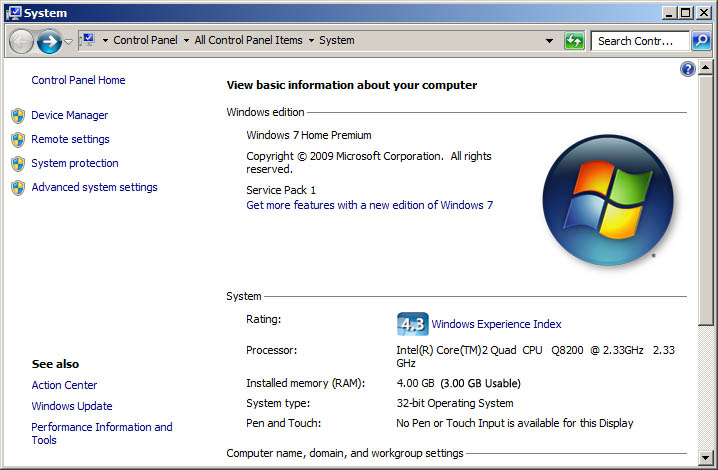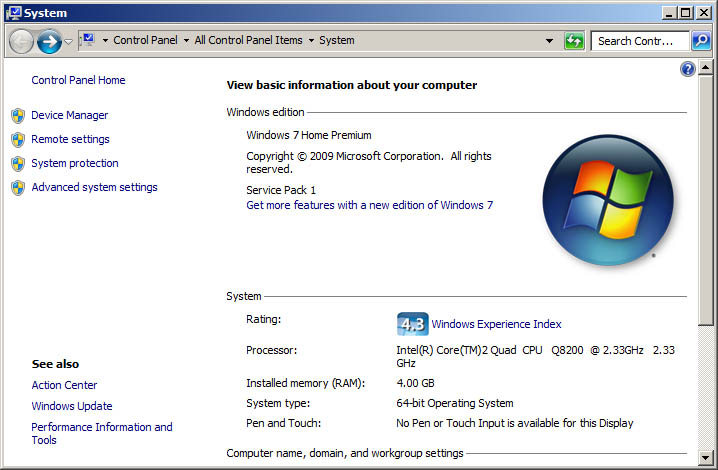-
-
products
-
resources
-
support
-
company
-
Why 32-Bit Windows Steals Your Memory
By Steve Horton October 22, 2013memory, ram, windowsNo CommentsOne of the drawbacks to older versions of Windows is that they can’t access more than 4 GB of RAM. This has to do with their 32-bit technology. And if you don’t know what that is, hold on. We’ll explain everything.

32-bit Windows can’t see all of your RAM…Your computer does more than you think. Take a simple action like moving your mouse pointer. When you do that, your computer needs to know to look at your mouse to see if it moved. It then has to interpret the data to figure out what the motion is. Your computer looks up how to draw a mouse pointer and, while it draws it moving, it looks at what’s on the screen to compute how those elements make the mouse pointer respond. All of this gets stored in your computer’s memory.
There’s a lot going on in there, and your computer needs a way to keep it straight. The way that it does this is to give every piece of memory an address, kind of like a ZIP code. As long as you have enough addresses, your computer has a way of describing each chunk of memory so that it can find it.
As an example, take the ZIP code system. Every state has a block of ZIP codes. However, what would we do if the U.S. decided to annex Canada? It would gain a lot of hockey teams, but what ZIP codes would we give them? Pretty much every ZIP code from 01001 (Agawam, MA) to 99950 (Ketchikan, AK) is in use. If the U.S. annexed Canada, it wouldn’t have room for them in its ZIP code system.
Your computer’s memory works the same way, but with much bigger numbers. Older versions of Windows with 32-bit memory addressing can handle up to 4 GB of memory (4,294,967,296 bytes), and don’t have a way of talking to more RAM than that. Furthermore, they apply that limit to all of your system’s memory. If you have a graphics card, it probably has some memory of its own. Other hardware can cut into that memory. For that reason, the amount of actual system RAM that your computer can recognize within its 32-bit system is usually anywhere from 3.0 to 3.5 GB.

…but 64-bit Windows canThe good news is that, if you have more than 4 GB of RAM installed, your computer likely has the ability to support more RAM. The limitation isn’t in your computer — it’s in Windows, and you can fix it by upgrading your version of Windows.
Windows XP, Vista, 7 and Windows 8 all come in 32- and 64-bit versions. While Windows XP 64-bit was typically only for servers and workstations, newer flavors of Windows — like the one you’re probably running — work fine in 64-bit versions. When you go from a 32-bit to a 64-bit version of Windows, your computer will get the ability to talk to memory above the 4GB limit. It’s kind of like adding a sixth-digit to ZIP codes.
If someone told you not to upgrade to 64-bit Windows, they were right — in 2008. When 64-bit Windows first came out, many software programs and device drivers weren’t set up to handle it. Today, just about every program is updated for 64-bit computing. If your computer has old drivers installed, Driver Reviver can catch them and fix them before you have trouble, as well. You can safely upgrade — and take advantage of all that your computer’s RAM has to offer.
Was this post helpful?YesNoFree Driver Updates
Update your drivers in less than 2 minutes to enjoy better PC performance - Free.
Free Driver Updates
Update your drivers in less than 2 minutes to enjoy better
PC performance - Free.
Didn't find your answer?Ask a question to our community of experts from around the world and receive an answer in no time at all.most relevant recent articles Pin It on Pinterest